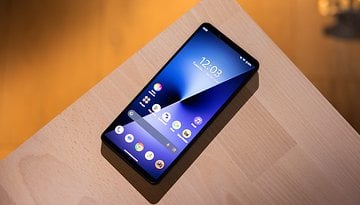Honor 200 Pro Review: A Matter of Perspective


The Honor 200 Pro is the newest premium mid-ranger from the Chinese company and promises a next-level camera experience for less. It also brings a quirky “organic” design that may be divisive and some of the features found on the flagship Magic 6 line. Let’s see how it compares in performance, camera, battery, and more in this review.
Good
- Good performance and lots of memory
- Bright and vibrant OLED display
- Excellent main camera
- Versatile cameras
- Fast wired and wireless charging
Bad
- Below average update policy for its price range
- Outdated interface

Honor 200 Pro in a nutshell
Honor launched its 200 Pro phone in June 2024, after a Chinese-only launch in May. The upper mid-ranger (or accessible flagship?) is priced at 800€/£700 for the 12/512 GB model. The phone will not be available in the US.
The phone comes with a big 6.78-inch curved OLED display, a true triple-camera setup with a telephoto and ultrawide cameras, and is powered by a flagship-level Snapdragon 8s Gen 3 processor.
Design and display
There is a sense of dejà-vu when first seeing the Honor 200 Pro. It has been a while since I last saw a sub-$1000 phone with a curved display. And the retro vibes continued on the phone’s back, with a curved camera island.
Pros:
- Solid build.
- Excellent display.
- Screen protector from the factory.
- Fingerprint-proof back.
Cons
- Camera island design is not for everyone.
According to Honor, the camera module was inspired by the curves of Casa Milá from Catalan architect Antoni Gaudí. The glass cover has a different shape from the underlying metal base, which curves to meet the glass forming an uneven frame. It definitely looks well-built, but wasn’t exactly for my taste (from a self-admitted Gaudí fanboy…).

The rest of the back is made from glass, our review unit came in with a black matte finish which not only looks good and feels nice to the touch but also was free from fingerprints.
The curved back surface is mirrored in the front, not unlike every single flagship phone from five years ago. While flat displays have won in the West, curved displays are still strong in Asia, apparently.

But I digress, the display is a big and beautiful 6.78-inch AMOLED that not only refreshes at 120 Hz but also is specced to reach 4000 nits. We couldn’t reach that brightness level, but had no issues using the Honor 200 Pro outdoors.
To make use of that big area, the resolution is an equally high 2700 x 1200 pixels, resulting in 437 DPI. And under the display lies the fingerprint sensor, which worked as expected during our review. On top sits a pill-shaped notch which houses the dual selfie setup.
The Honor 200 Pro felt very good on the hand and its big screen didn’t result in a huge phone thanks to the curved display and thin bezels. Button placement was also fine, and in general, the phone felt like a true flagship.
MagicOS still carries the EMUI legacy
The Honor 200 Pro comes with MagicOS 8 on top of Android 14. The company promises three Android upgrades and four years of security updates. It still carries the same overall design as its EMUI predecessor, which feels a little dated in some places.
Pros
- Interface feels snappy.
Cons
- Interface design feels dated.
- Underwhelming update policy.
After a fresh install, we counted nine third-party applications, something that we felt did not fit with a premium phone. After updating those apps, the system reported 31.28 GB of used storage.
MagicOS 8 still feels like a straight EMUI successor, with its iOS-based navigation and layout starting to feel out of place with Android, especially after a few years into the Material You design. Long-time Huawei and Honor users, however, will feel at home using MagicOS 8.

For more details on MagicOS 8, you can check Camila’s review of the flagship Magic 6 Pro, and more details on the AI features in this Magic AI hands-on. In general, despite the outdated look, using the system felt snappy, but some inconsistencies around the interface—including the default Microsoft SwiftKey keyboard—were distracting.
One personal nitpick was that the natural holding position made it slightly cumbersome to reach UI elements on the bottom of the display. Even reaching for the space bar while typing forced the hand to grab the phone in an unbalanced way.
Flagship performance from the Snapdragon 8s Gen 3
Powered by the recently released Snapdragon 8 Gen 3, the Honor 200 Pro offers a flagship-level performance that is almost indistinguishable from the 2024 crop of premium phones. The use of modern memory standards for storage and RAM is helped by the generous capacities on offer.
Pros
- Good performance in daily tasks and games.
- Good thermal management
Cons
- Phone throttles down to keep cool.
Honor seems to have opted for a more conservative implementation of the powerful CPU, not sacrificing user comfort for the highest performance as some rivals usually do. Instead, on longer heavier tasks, the phone reduces the speed to avoid getting too hot.
| Honor 200 Pro (Snapdragon 8s Gen 3) |
Poco F6 Pro (Snapdragon 8 Gen 2) |
Poco F6 (Snapdragon 8s Gen 3) |
Google Pixel 8a (Tensor G3) |
OnePlus 12R (Snapdragon 8 Gen 2) |
Galaxy S23 FE (Exynos 2200) |
Xiaomi 14 Ultra (Snapdragon 8 Gen 3) |
|
|---|---|---|---|---|---|---|---|
| AnTuTu | 1,247,367 | 1,563,987 | 1,455,312 | 1,153,512 | 1,307,367 | n/a | 1,939,484 |
| 3DMark Wild Life Extreme Stress Test |
Best loop: 3035 Worst loop: 1639 Stability: 54% |
n/a | Best loop: 3140 Worst loop: 2584 Stability: 82.3% |
Best loop: 2437 Worst loop: 1667 Stability: 68.5% |
Best loop: 3660 Worst loop: 2462 Stability: 67.3% |
Best loop: 2370 Worst loop: 1809 Stability: 76.3% |
Best loop: 4708 Worst loop: 3606 Stability: 76.6% |
| Geekbench 6 | Single: 1489 Multi: 4480 |
Single: 1442 Multi: 5318 |
Single: 1953 Multi: 4930 |
Single: 1688 Multi: 4362 |
Single: 1561 Multi: 5142 |
Single: 1614 Multi: 4073 |
Single: 1828 Multi: 6317 |
The effect is noticeable on the 3D Mark Stress Test, in which the Honor phone dropped its performance to almost half by the end of the test.
On a gaming-oriented phone that would be a bad sign, but for a device geared to the general public, prioritizing thermals was probably the better choice. We just wish Honor used a beefier heat dissipation system.

In testing, performance in games such as Call of Duty Mobile and Genshin Impact was good. The latter was able to run at the highest graphical settings at the 60 fps option, although the phone did get warm, especially around the metal frame.
For simpler daily tasks, the Honor 200 Pro performed on the same level as any flagship phone, with app transitions, animations, and effects being applied almost instantaneously. Synthetic benchmarks show that the phone falls slightly below 2024’s top phones, but not on a level that we could notice while using the device.
Camera gimmicks
The camera setup on the Honor 200 Pro consists of a main 50 MP sensor, an ultra-wide lens with a 12 MP sensor that also serves as a macro camera, and a telephoto lens with a 2.5x optical zoom.
Pros
- Versatile camera setup.
- Excellent daylight and night shots on the main camera.
- Cool portrait filters to play with.
Cons
- Secondary cameras are a step down from the main camera.
- Finicky settings on the camera app.
- Inconsistent results from the different cameras.
The big 1/1.3’’ main sensor captures plenty of light both day and night, with digital zoom shots at 2x proving very usable. Color reproduction was good, with punchy, saturated colors.
In fact, in some cases, the 2x digital zoom from the main camera seemed superior to the 2.5x optical zoom from the smaller sensor under the telephoto lens, which often offered more muted colors.
Speaking zoom shots, while the Honor 200 Pro offers up to 50x magnification, results are blurry as expected from other ultra-zoomers. 10x shots, on the other hand, while not print-quality, may be good enough for sharing on social media or messaging apps.
The ultra-wide camera performed fine in daylight, without the level of detail from the main camera, but still good for its 12-megapixel resolution. At night, however, the limitations of the smaller sensor (in both resolution and area) become clear, with loss of details and artificial processing.

Honor promotes its portrait mode heavily on the marketing material, with a partnership with the portrait specialists at the French Studio Harcourt. The result is three color filters for the portrait mode on top of the digital processing applied by the phone. The effects are not available on the selfie camera, even when using the front camera portrait mode.
Confusingly, while using the back cameras in Portrait mode, the Bokeh button allows adjusting the level of background blur digitally applied. When using the selfie camera on Portrait, however, the button merely turns off the blurring, outputting the same images as the main Photo mode. As the choice is saved, many shots were lost during this test.

Interface complaints aside, the selfie camera was very reliable in daylight, with natural-looking photos in both the normal and ultra-wide (0.8x) modes. Portrait mode worked ok, with the usual artifacts on the edges when looking up close. At night, however, selfies looked slightly blurry.
One extra thing: The Macro mode on the camera app uses the ultra-wide camera, and the results were surprisingly good. It allows focusing really close objects, around 2 cm in some non-scientific measurements.
Honor 200 Pro battery
Honor touts its silicon-carbon battery with 5200 mAh capacity, and includes support for 100W wired charging and 66W wireless charging. Confusingly, some markets will have the 100W charger included in the box, and some won’t.
Pros
- Fast wired and wireless charging.
- When optional, the charger is usually offered as a bonus.
Cons
- Charger is optional in some markets.
Honor didn’t supply us with the maximum-rated adapter with the 200 Pro, so the tests below were done with third-party USB-PD chargers. Results were as average as expected, with a full charge taking 1h14min on an Anker 65W adapter and almost double on a similarly rated Ugreen charger.
| Charging | Honor 200 Pro 5200 mAh | Anker 65W |
Poco F6 Pro 5000 mAh | 120 W |
OnePlus 12R 5500 mAh | 100 W |
Google Pixel 8a 4492 mAh | 18 W |
Galaxy S23 FE 4500 mAh | 25 W |
|---|---|---|---|---|---|
| 5 minutes |
|
|
|
|
|
| 10 minutes |
|
|
|
|
|
| 20 minutes |
|
|
|
|
|
| 30 minutes |
|
|
|
||
| 1 hour |
|
|
|
||
| Full charge |
|
|
|
|
|
| PC Mark Battery test |
|
|
|
|
|
We also couldn’t verify the ambitious 66W wireless charging claims, but the Honor 200 Pro can also be used with a standard Qi charger at a lower power.
Despite the novel battery chemistry, the rated 5200 mAh capacity fared as well as expected, with a little bit over a day of regular usage using the default always-on display mode.

In the synthetic PCMark battery test which calculates the runtime under a simulated workload going from 80% charge to 20%, the Honor 200 Pro got only a 11h24 score. However, its performance score was 17091, indicating that the phone was not holding back during the test, something that might have influenced the rival OnePlus 12R result, for example.
Honor 200 Pro technical specifications
| Honor 200 Pro | |
|---|---|
| Display |
|
| SoC |
|
| Memory |
|
| OS |
|
| Camera |
|
| Selfie Camera |
|
| Battery |
|
| Connectivity |
|
| IP Certification |
|
| Dimensions and weight |
|
| Other points that may interest the nextpit community:
|
|
Final verdict
The Honor 200 Pro is unique in many senses, but that is a positive feature maybe only when talking about the camera and its many creative modes on offer. Despite the positioning as a "premium mid-range" phone, its €800 MSRP (approx. $870) places it in flagship territory, especially with its mid-year release and discounted rivals from the first semester.
Honor seems really proud of the design of the 200 Pro, but despite liking the build quality and materials on the review unit, the camera island has a divisive look that can look too retro.
Besides that, the Honor 200 Pro offers a really competitive package in its screen and performance. The big display, curved edge aside, is perfect for media consumption, and even the stereo speakers sounded nice (but are side-firing, which affected the spatial immersion).
Honor's legacy and its "think different" attitude are welcome, but sometimes it feels some elements are being neglected, such as the software side. While the strong EMUI roots will make Huawei orphans feel at home, the interface feels inconsistent and dated. And the Honor 3+4 update promise falls behind not only its Samsung and Google rivals but even the OnePlus models in the same price range.
































































